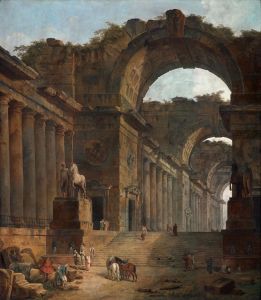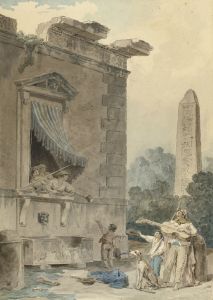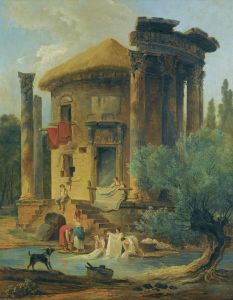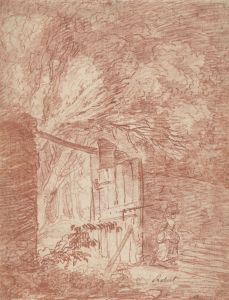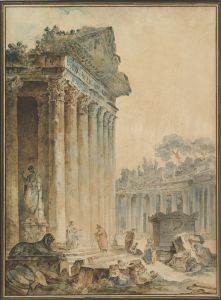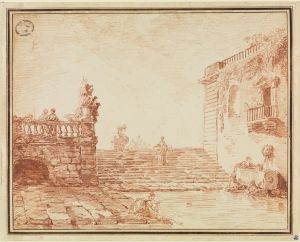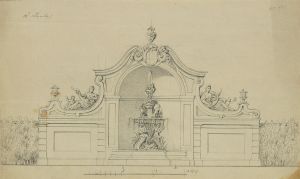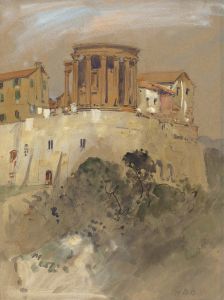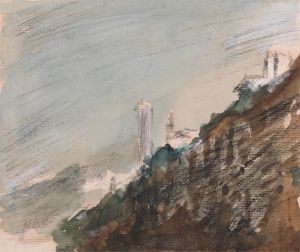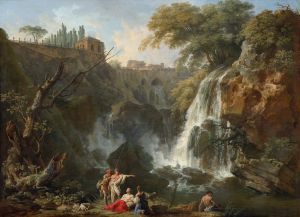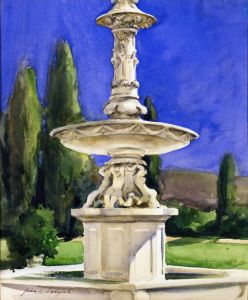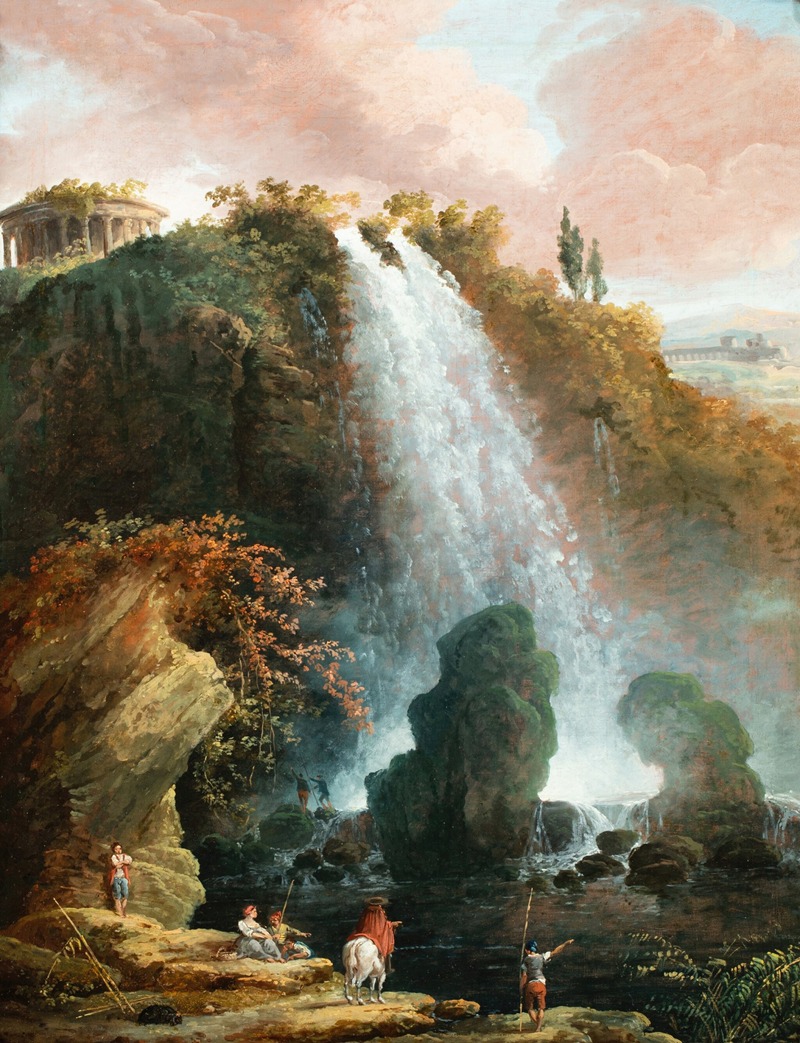
The Tivoli waterfalls with the Temple of the Sibyl
A hand-painted replica of Hubert Robert’s masterpiece The Tivoli waterfalls with the Temple of the Sibyl, meticulously crafted by professional artists to capture the true essence of the original. Each piece is created with museum-quality canvas and rare mineral pigments, carefully painted by experienced artists with delicate brushstrokes and rich, layered colors to perfectly recreate the texture of the original artwork. Unlike machine-printed reproductions, this hand-painted version brings the painting to life, infused with the artist’s emotions and skill in every stroke. Whether for personal collection or home decoration, it instantly elevates the artistic atmosphere of any space.
"The Tivoli Waterfalls with the Temple of the Sibyl" is a captivating painting by the renowned French artist Hubert Robert, who lived from 1733 to 1808. Known for his landscapes and architectural paintings, Robert was a prominent figure in the 18th-century art scene, particularly celebrated for his ability to blend real and imagined elements into his works. This painting is a testament to his skill in capturing the grandeur and romanticism of historical and natural settings.
The painting depicts the famous waterfalls at Tivoli, a town located near Rome, Italy. Tivoli has long been celebrated for its stunning natural beauty and its historical significance, particularly during the Roman era. The waterfalls, known as the Cascades of the Aniene River, have been a source of inspiration for many artists and writers over the centuries. In Robert's painting, the waterfalls are portrayed with a dramatic flair, emphasizing the power and majesty of the natural landscape.
Adjacent to the waterfalls, the Temple of the Sibyl is prominently featured. This ancient Roman temple, also known as the Temple of Vesta, is one of the most iconic structures in Tivoli. It is characterized by its circular design and Corinthian columns, which are typical of Roman temple architecture. The temple has been a subject of fascination for many artists, including Robert, who was drawn to its picturesque setting and historical significance.
Hubert Robert's depiction of the Tivoli waterfalls and the Temple of the Sibyl is notable for its romanticized interpretation of the scene. The painting captures the essence of the 18th-century European fascination with classical antiquity and the sublime beauty of nature. Robert's use of light and shadow, along with his attention to architectural detail, creates a sense of depth and movement, drawing the viewer into the scene.
The painting reflects Robert's broader artistic interests and his experiences during his time in Italy. He spent several years in Rome, where he was influenced by the ruins and landscapes of the region. This period was crucial in shaping his artistic style, as he developed a keen interest in the interplay between nature and architecture, a theme that is evident in "The Tivoli Waterfalls with the Temple of the Sibyl."
Robert's work is often associated with the picturesque and the sublime, two aesthetic concepts that were highly valued during the 18th century. The picturesque refers to the artistic quality of a scene that is visually attractive and suitable for painting, while the sublime evokes a sense of awe and wonder, often through depictions of nature's grandeur and power. In this painting, Robert successfully combines these elements, creating a composition that is both beautiful and awe-inspiring.
"The Tivoli Waterfalls with the Temple of the Sibyl" is a fine example of Hubert Robert's ability to capture the essence of a place while infusing it with his own artistic vision. The painting remains an important work in the study of 18th-century landscape painting, illustrating the enduring appeal of classical themes and the natural world in art.






